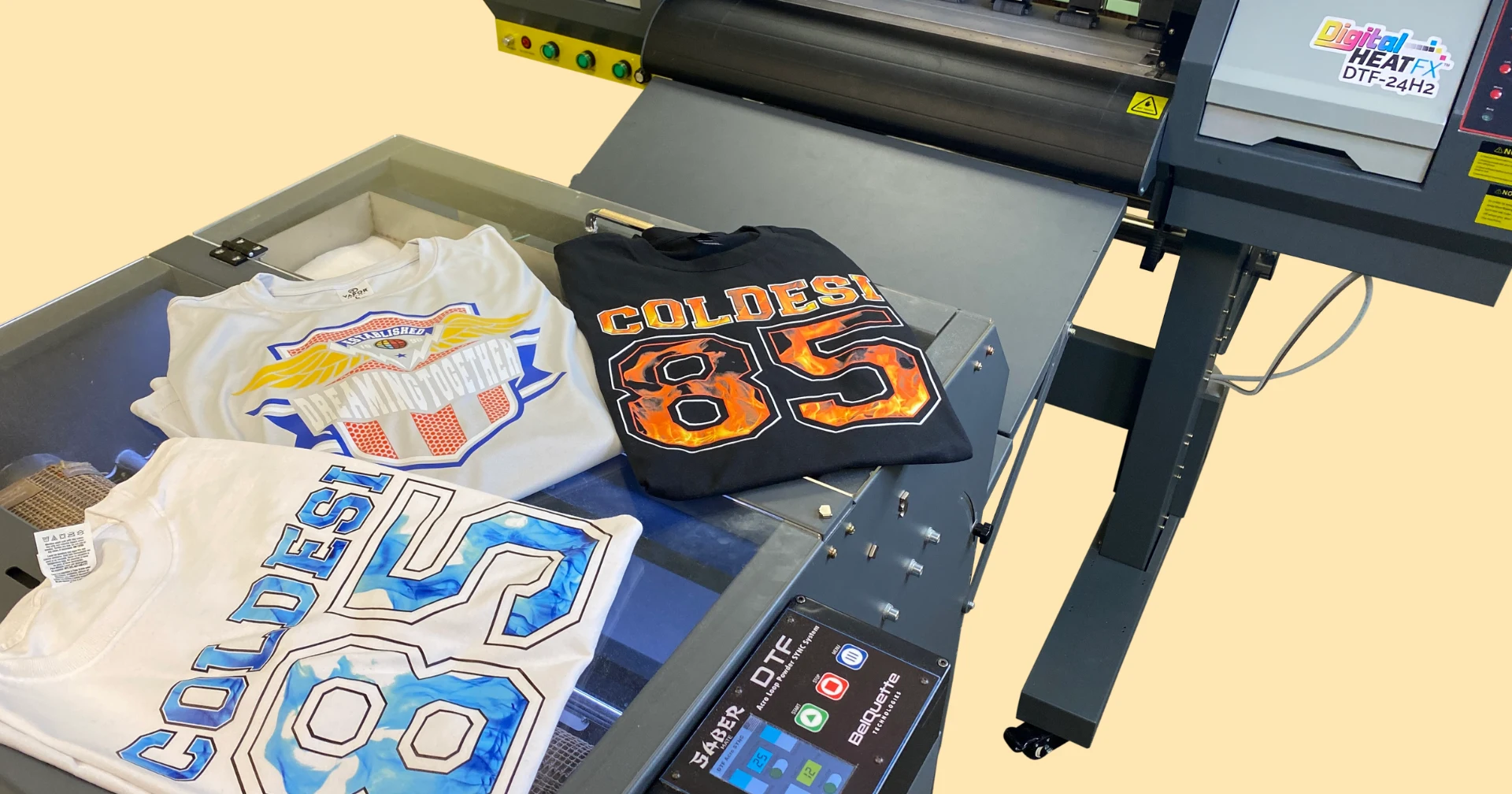DTF Printers: Transforming Custom Apparel Business
Custom clothing is booming, and it is no marvel why. The demand for custom designs is increasing, so businesses of all sizes are getting on board. Everyone wants to create unique and personalized products, from small to large corporations. One generation at the leading edge of this revolution is Direct-to-Film (DTF) printing. This new technique is a game-changer, offering flexibility and performance like never before. It’s also making the process more enjoyable and satisfying. DTFLINKO is providing complete services regarding DTF Printers.
What is DTF Printing?
DTF printing means printing designs directly onto a particular film. The film is then applied to a material, such as a t-shirt or mug, to create a custom design. This technique has grown to be popular because of its potential to offer colorful, long-lasting prints on a massive type of substance. For complete guide please visit https://www.dtflinko.com/.
How DTF Printing Works
Design Creation: The first step is to develop your format and use a photograph format software program. The layout is then meditated before printing.
Printing on Film: The layout is outlined onto a unique PET movie using a DTF printer. These printers use environmentally friendly water-based inks.
Powder Application: When the ink is wet, a specific adhesive powder is applied to the posted film. This powder allows the layout to adhere to the cloth.
Curing: The film is then heated to treat the adhesive powder, preparing it for the switch.
Transfer: Finally, the film is placed onto the material and pressed with warmth—the heat causes the adhesive to soften, bonding the layout to the fabric.
Advantages of DTF Printing
Versatility
One of the standout competencies of DTF printers is their versatility. Unlike traditional printing strategies, DTF can be used on nearly any fabric, from cotton and polyester to blends and even non-textiles. This makes it a high-quality choice for growing custom clothing like T-shirts, hoodies, hats, and more.
High-Quality Prints
DTF printing produces superb, vibrant prints, which might be evidence against fading and cracking. The bright and exact sun shades make even the most complex designs pop.
Cost-Effective
For small groups, DTF printers offer a rate-powerful answer. They need less setup time and lower production fees than conventional display printing or embroidery. This makes it simpler for startups to enter the custom garb marketplace without massive advance funding.
Eco-Friendly
DTF printers use water-based total inks, which are more environmentally pleasant than unique printing techniques that use solvent-based inks. The approach, moreover, generates much less waste, as there is no need for monitors or plates.
Getting Started with DTF Printing
Choosing the Right DTF Printer
The first step in starting your DTF printing journey is choosing the right printer. Look for a version that fits your desires in duration and speed and prints first-rate phrases. Some famous producers include Epson, PUNEHOD, and DTFPRO.
Essential Supplies
In addition to a DTF printer, you will need a few other materials:
PET movie: Special film used for printing.
DTF inks: Water-primarily based absolutely inks designed for DTF printing.
Adhesive powder: Used to bond the format to the cloth.
Heat press: This is used to shift the layout from the movie to the fabric.
Setting Up Your Workspace
Ensure you have been given an easy, nicely ventilated workspace. Proper air glide is critical, as the curing approach can produce fumes. Organize your materials for easy access and a green workflow.
Creating Your Designs
Invest in the right picture format software, like Adobe Illustrator or CorelDRAW. This gear will help you create outstanding designs that can be quickly revealed. Remember to reflect your designs before printing to ensure they switch efficiently onto the cloth.
Step-by means of-Step Guide to DTF Printing.
Prepare Your Design: Create or import your format into your image layout software program software. Make fantastic it’s far reflected and equipped for printing.
Load the Film: Load the PET movie into the DTF printer. Ensure it’s far aligned efficaciously to avoid any misprints.
Print the Design: Print your layout onto the film. The printer will lay the ink in the ideal order to make a vibrant, durable print.
Apply the Powder: While the ink is still moist, observe the adhesive powder lightly over the published layout. Shake off any more excellent powder.
Cure the Powder: Place the film in a curing oven or use a heat press to cure the adhesive powder. This step is essential to ensure the powder bonds well with the ink.
Transfer the Design: Position the movie onto your clothes and use a heat press to change the format. Apply organization strain and heat according to the producer’s instructions.
Peel the Film: Once the cloth has cooled, cautiously peel away the movie to expose your completed design.
Troubleshooting Common Issues
Poor Print Quality
If your prints are popping out blurry or faded, check your printer settings. Ensure you use the proper resolution and that your inks aren’t expired. Regular protection of your DTF printer is critical to keep it jogging smoothly.
Design Not Adhering
If your layout isn’t sticking to the fabric, it may be due to insufficient warmth or strain during the switch method. Double-check the warmth press settings and make certain the adhesive powder is evenly achieved.
Ink Smudging
Ink smudging can occur if the movie is handled before the ink is absolutely dry. Ensure the published film is permitted to dry completely before using the adhesive powder.
Maximizing Your DTF Printing Business
Market Research
Understanding your target market is vital. Identify your capability customers and what designs they select. This will help you create merchandise that resonates with your target audience.
Building a Brand
A sturdy brand identity sets you apart from the competition. Invest time in growing a memorable logo brand, color scheme, and regular aesthetic. Consistency is key to building logo popularity.
Online Presence
In the modern-day digital age, having a web presence is vital. Create a client-friendly net web page wherein customers can browse and buy your merchandise. Use social media systems to show off your designs and hook up with your audience.
Quality Control
Maintaining excessive pleasantness is essential for customer pride. Regularly examine your merchandise to ensure it meets your necessities. Investing in high-quality control processes will help construct a reputation for reliability.
Customer Engagement
Engage with your customers via social media, email newsletters, and channels. Offer promotions, discounts, and distinct designs to keep them coming again. Positive client memories result in repeat organization and word-of-mouth referrals.
Future Trends in DTF Printing
Technological Advancements
As technology continues to conform, we can expect additional enhancements in DTF printers. Faster print speeds, higher resolutions, and more excellent green inks are just a few improvements on the horizon.
Sustainable Practices
Sustainability is becoming increasingly critical in the fashion industry. Look for techniques to incorporate green practices into your business, such as using herbal cloth and decreasing waste.
Customization and Personalization
The call for personalized merchandise is growing. Offering customization alternatives, including customized names or messages on garb, can set your commercial corporation apart and trap extra clients.
Conclusion
DTF printers are transforming the custom clothing industrial enterprise. Their versatility, quality prints, and affordability make them a top choice for businesses of all sizes. Following the steps in this guide, you can start your own DTF printing business. This will allow you to take advantage of the growing demand for DTF printing services and build a successful business. Stay ahead by embracing new tech and sustainable practices.






